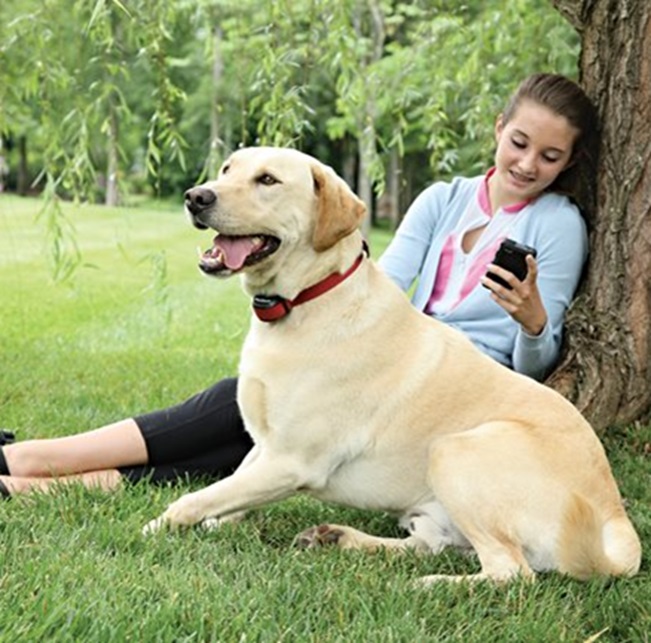If you are lucky to live in a house with a nice garden where your dog can play freely, it’s a shame to keep it inside or tied to a leash because you are worried it might wander off. Dogs like exploring, and as it often happens, they can end up in your neighbour’s place sniffing the flowers, or worse, run to the street. This is why flexible containment solutions are necessary. Wireless dog fences allow for certain freedom while keeping your pet safe and giving you peace of mind.
Why Confine Your Dog?
Confining your pet not only prevents it from becoming a nuisance for your neighbours, but it is also good for their safety and your peace of mind. Dogs can easily get hit by a passing vehicle if they run into the street or get into an aggressive interaction with another dog.
They can also go astray and get lost or stolen. Mishaps happen in an instant and you can’t watch them every second of the day. Confining them to your property makes you feel more comfortable while your pup is spending time outdoors and enjoying the fresh air and play.
What Is a Wireless Fence and How Does it Work?

In case you haven’t come across this techy gadget yet, let’s cover the basics. These advanced dog fences wireless systems operate through a combination of a transmitter and a receiver collar. The transmitter is plugged into an electrical outlet anywhere in the house and a circular boundary zone is created.
The diameter of the zone can be adjusted to your needs, with the centre being the spot where the transmitter is plugged in. If you want to create a larger boundary area, just add extra transmitters and overlap the signals.
The other part is the dog’s collar. This acts as a receiver and picks up the signal from the transmitter. When the pet is close to the edge of the boundary, it receives feedback that gets their attention and causes them to return to the zone. The correction levels can be a mixture of beeping sounds and vibrations, and small static shocks if they push past the border.
Are Wireless Electric Fences Safe for Dogs?
When used correctly, the wireless electric fences for dogs do not cause harm, especially when you use the right training techniques. Since the system first sets off a warning beep, you can teach your dog to react by moving back to the yard. Once the dog goes outside the radio field, mild static pulses will be delivered until he is back inside the area.
There are different settings of the pulses that can be adjusted, and you can choose the lowest if that gets your pup’s attention. An additional safety feature is the complete cut-off of shock after 15 seconds of constant correction.
You can also set up flags at the border of the confined area as a visual cue for the dog, as this is helpful when you want to use the invisible fence outside the home. If you are camping or spending some time in different locations, it will be easier for your pup to know where the boundary is.
How Much Area Can They Cover?
The wireless fence can cover both small and larger areas up to 3/4 acre, starting from a 6.7 m radius, up to a 32m radius. If you want to create a larger boundary area you can install an additional transmitter with overlapping signals. Advanced models allow multiple dog management by simply adding a receiver for each dog.
How Do You Set Them Up?
Setting up the system is quick and easy. All you need to do is decide on the centre of the area that you are planning to cover and set the transmitter around 1m from the ground on a stand or a small table. Make sure there are no metal objects around it and test how far out the signal can reach by listening to the warning sound from the collar. Then you can adjust the perimeter to give your dog the most space possible.
What Are the Advantages and Disadvantages?

One of the biggest advantages of dog fences wireless systems is their adaptability. Besides being portable and inexpensive, they can also cover any terrain such as hilly or wooded areas, or even water areas.
They don’t interfere with the view or outdoor space and you don’t have to go through the trouble of opening and closing gates. Plus, we can sometimes forget to close the gate and accidentally let the pup out, and this is not the case with this type of fence.
The downside is that while your dog cannot leave the boundary, the wireless fence will not prevent other dogs or wild animals from coming into the confined area. It may also be frustrating for the dog when they want to approach a human or a friendly dog and greet them. Keep in mind as well that the radio signal will not transmit through solid metal, roofs, or sheds, so if these materials are common in your yard then consider a wired fence.
Bottom Line
When building a traditional fence or installing a wire fence is not possible due to residence rules, renting conditions, or lack of budget, a wireless fence is the ideal solution. It is much more convenient than digging holes in the ground for days or spending a small fortune if you have a big estate. And most importantly, it’s a convenient and flexible way to allow your pet to roam and have fun while staying safe.
























